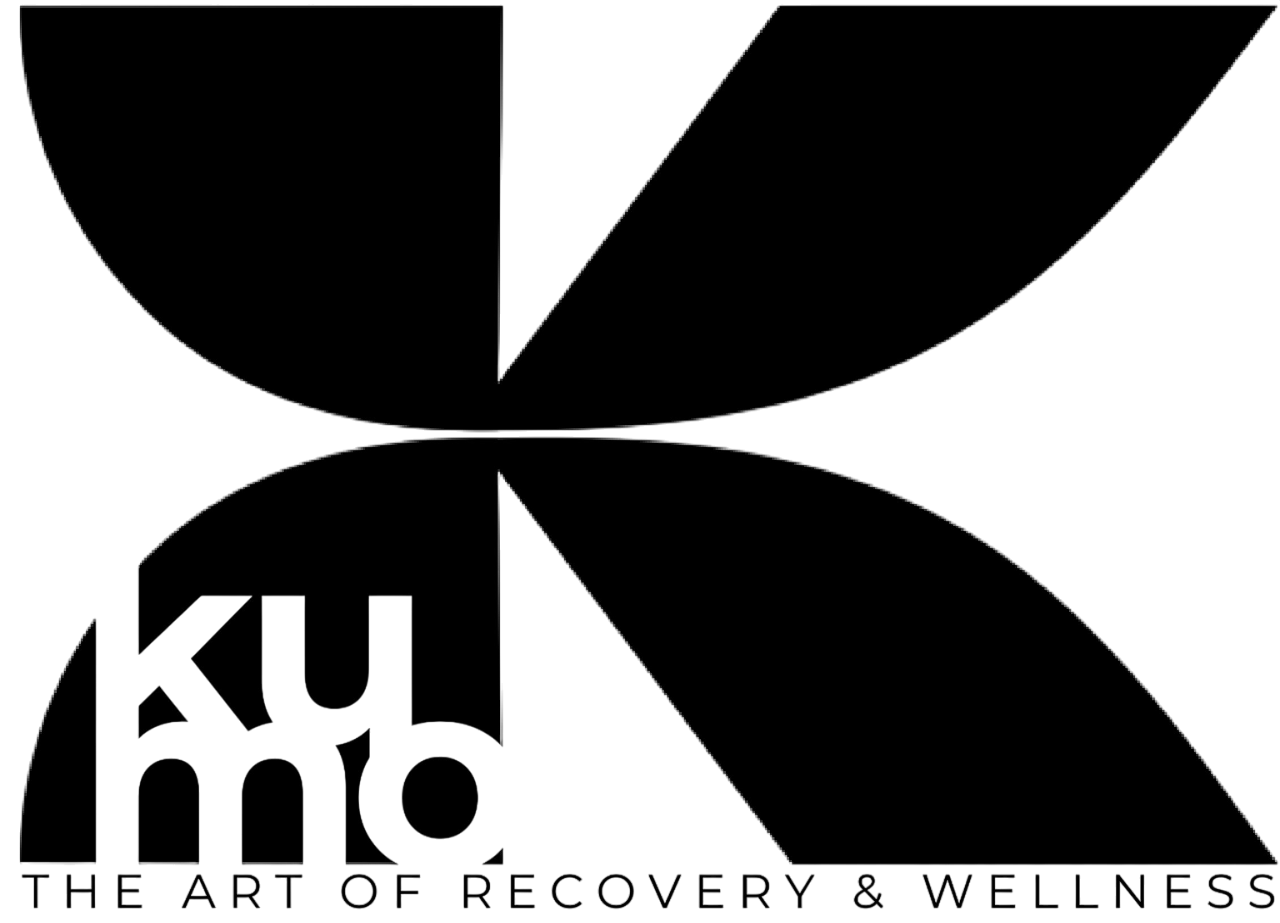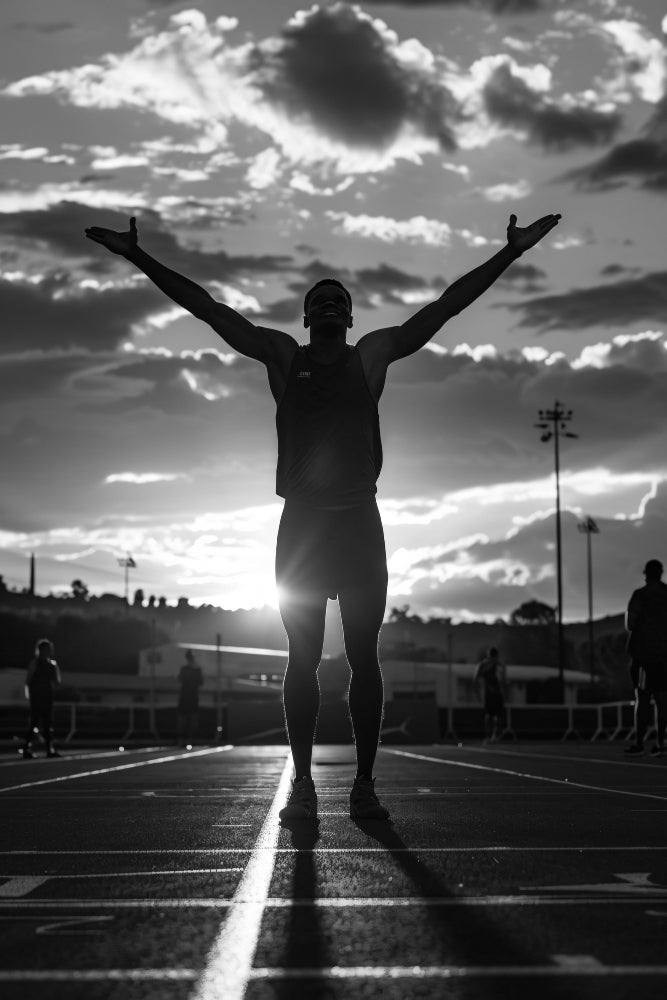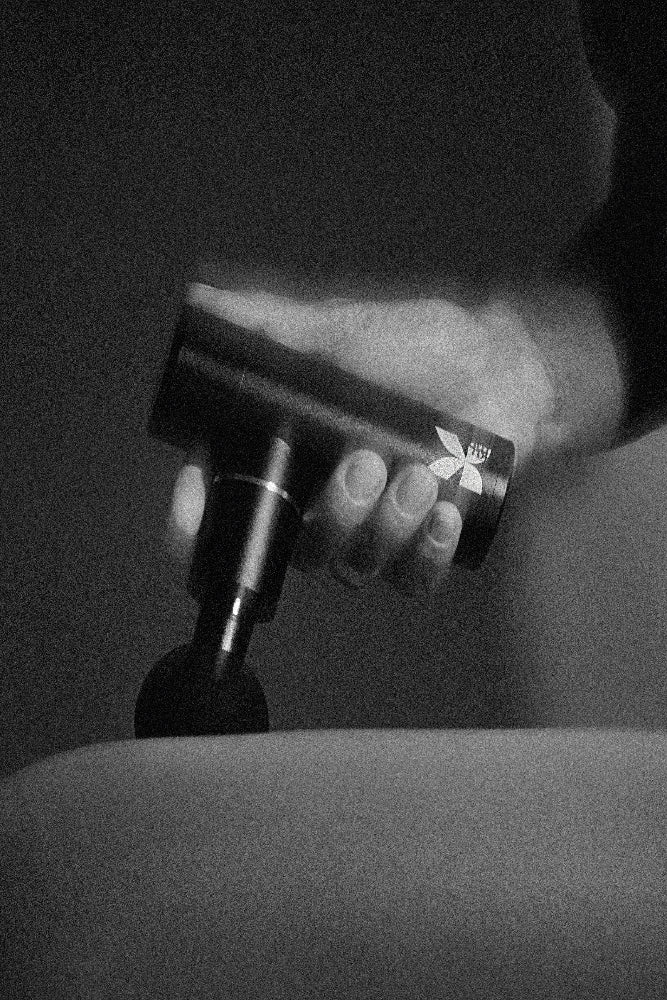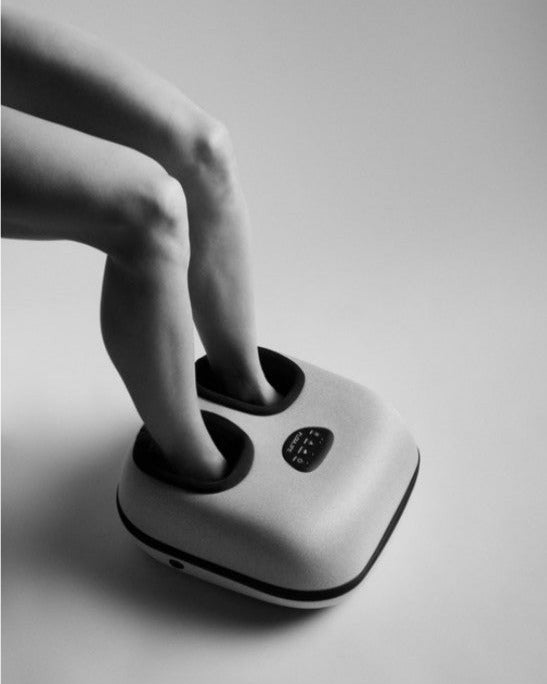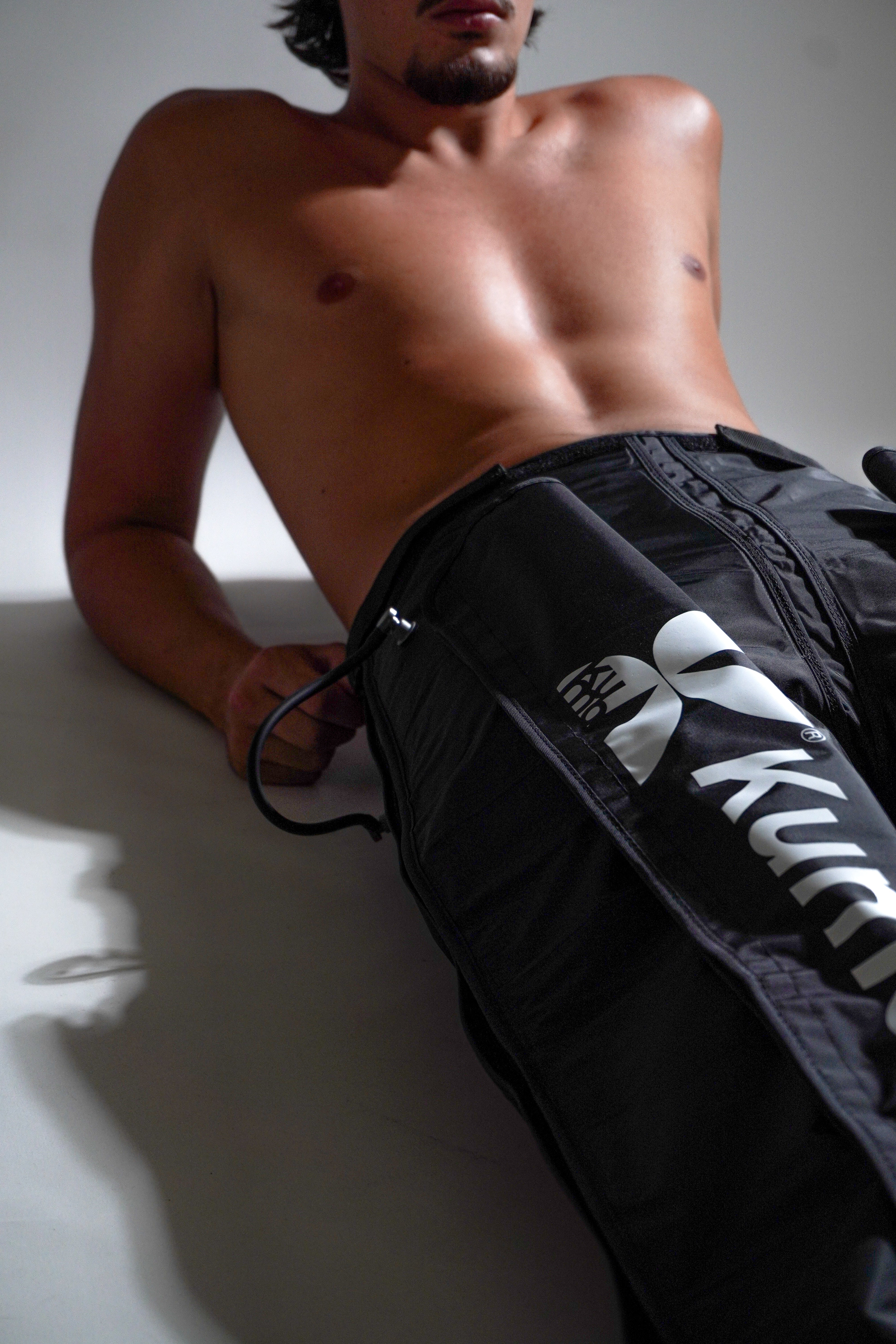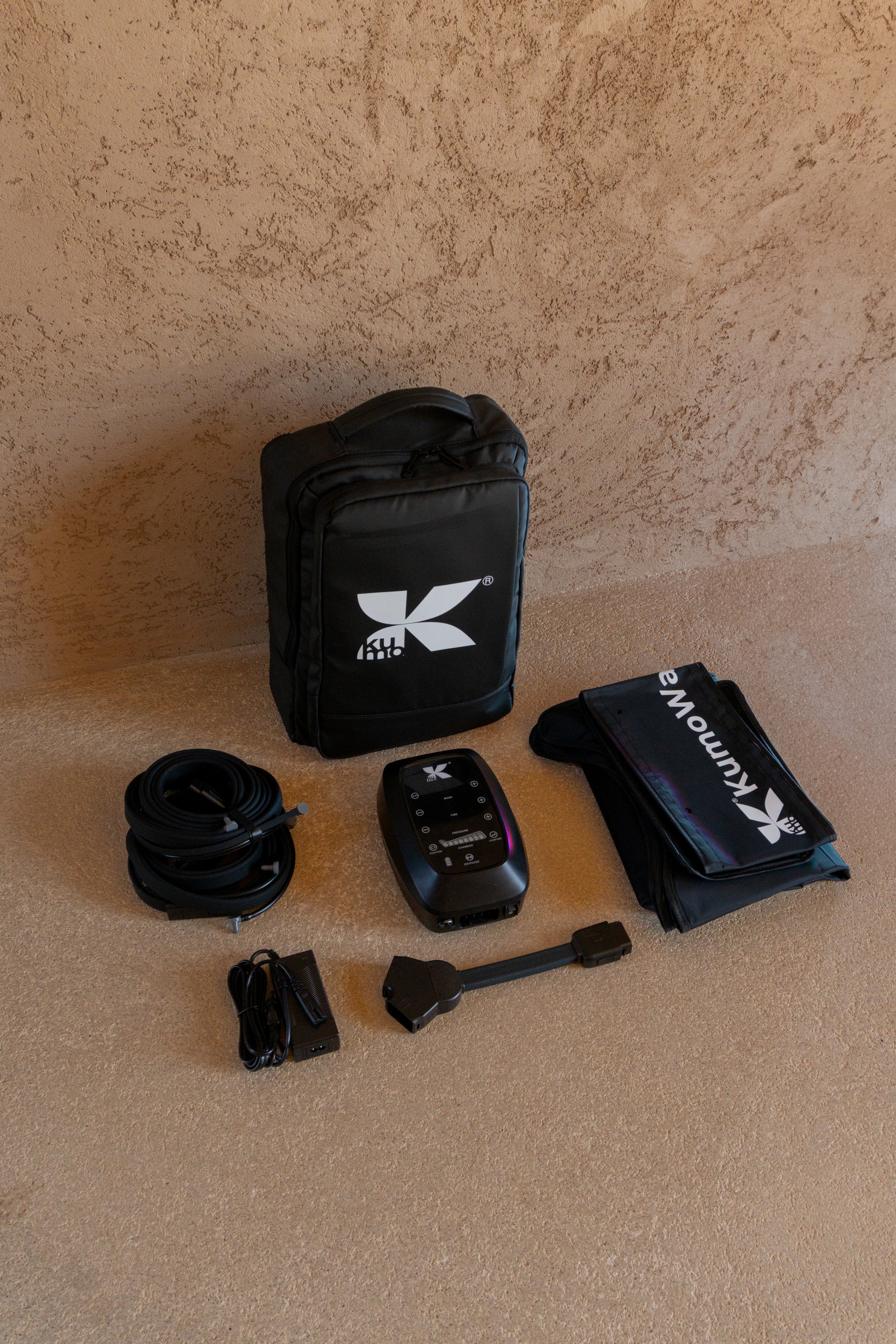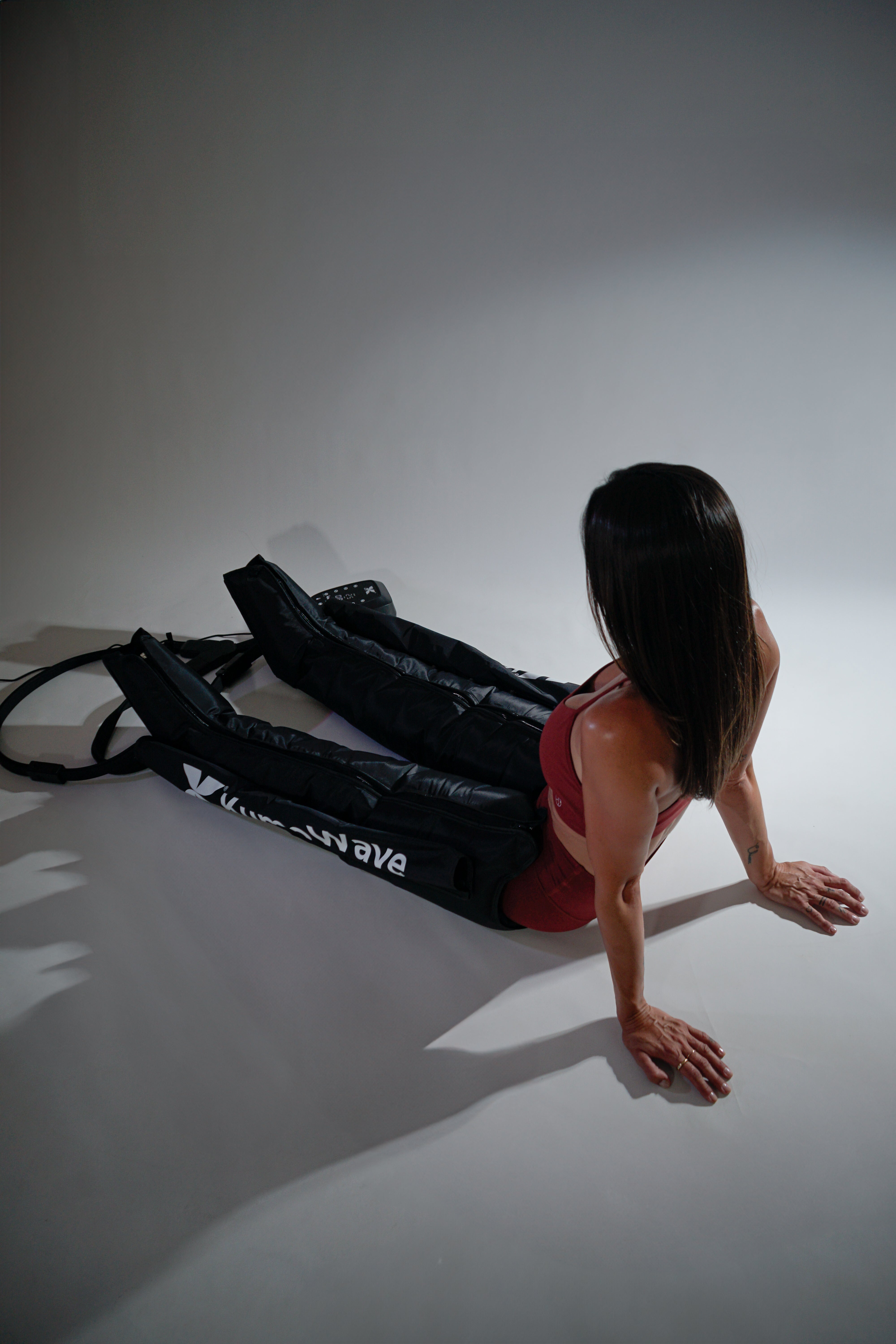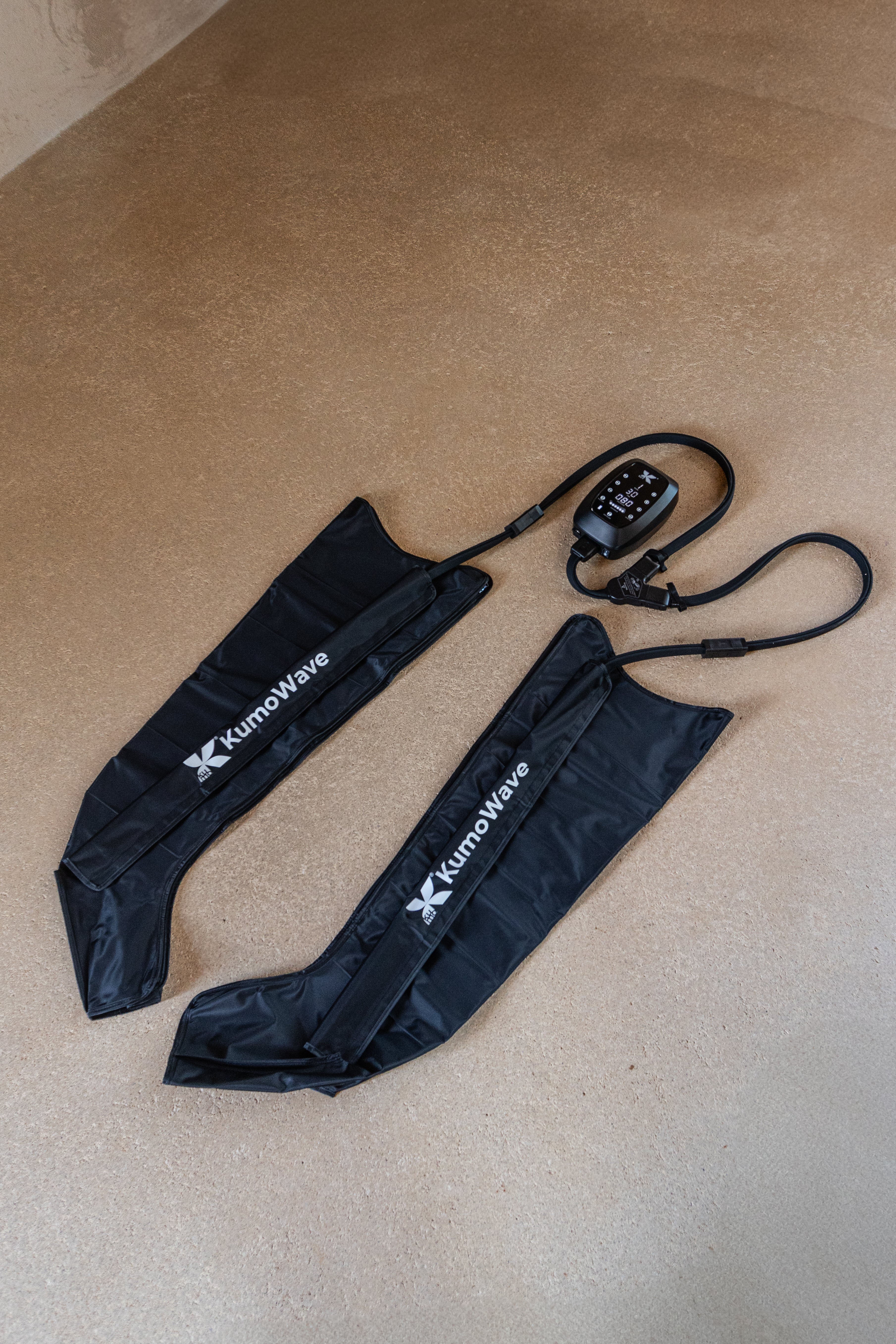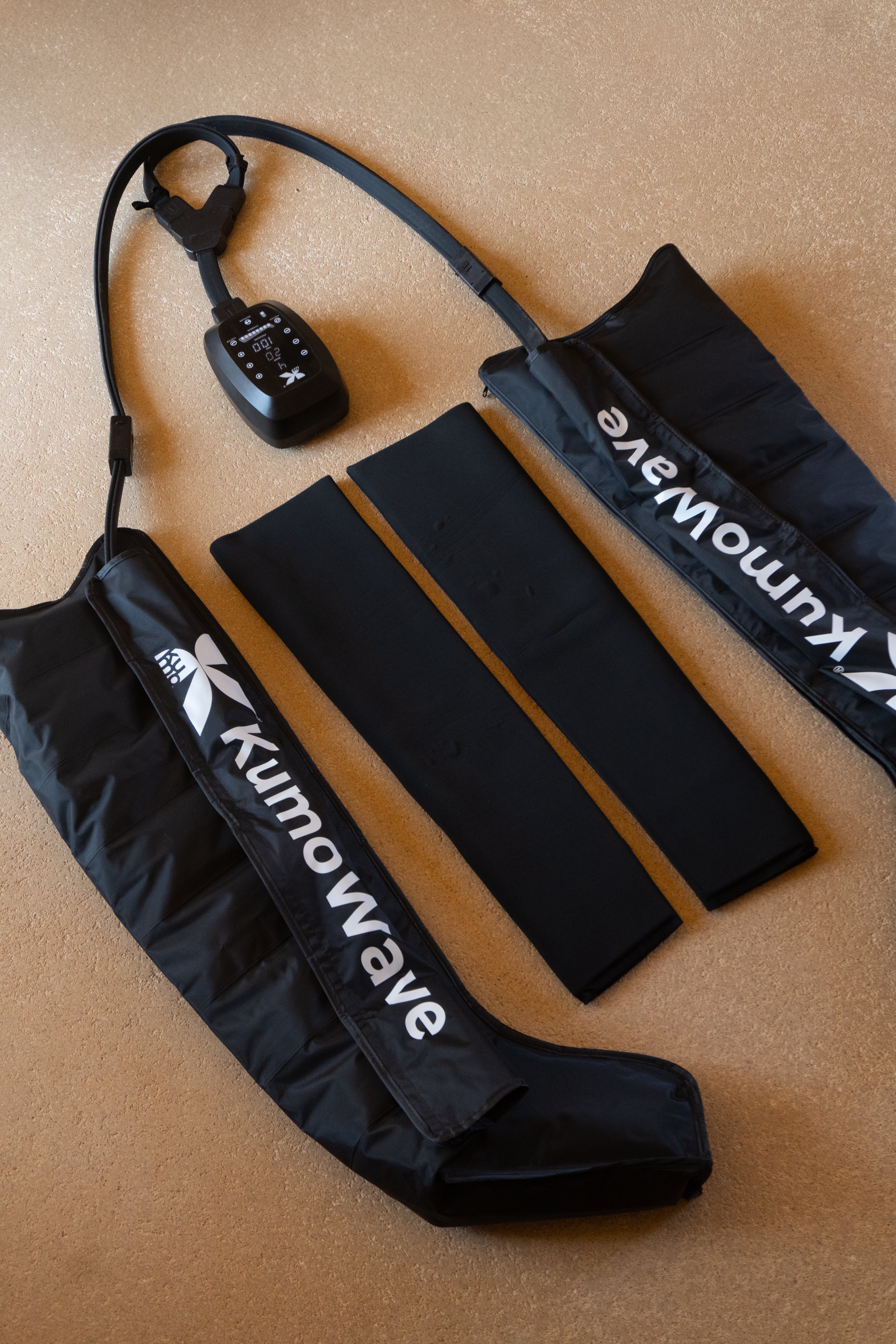Pressotherapy at home, the easiest way to speed up your recovery in 2025. If you exercise regularly and experience heaviness, muscle soreness, or swelling in your legs, here you'll find a practical guide to safely applying pressotherapy at home, with specific routines, guidelines, and how to integrate it with other recovery tools.
Coming soon
- 3 key uses: pre-workout activation, post-workout release, and drainage on rest days or travel.
- Guideline durations: 10–15 min before training; 20–30 min after; 30–45 min on easy days.
- Suggested pressure: 30–50 mmHg for general recovery; adjust +/- based on sensation and goal.
- Frequency: 3–6 sessions/week, prioritizing days with a higher workload.
- Complemented with red light and percussive massage for consistent results.
| Aim | Duration | Indicative pressure | Mode | Moment |
|---|---|---|---|---|
| Activation | 10–15 min | 20–35 mmHg | Sequential | 30–60 min before training |
| Download post | 20–30 min | 30–50 mmHg | Sequential with short “hold” | 1–2 h after training |
| Drainage | 30–45 min | 20–40 mmHg | Soft/wavy | Rest days or after trips |
| Pre-competition | 10–12 min | 20–30 mmHg | Short and light | The day before or morning of the test |
What is pressotherapy and why is it of interest to athletes?
Pressotherapy uses intermittent pneumatic compression in chambers that inflate and deflate in segments to promote venous return and lymphatic drainage. For athletes, this results in less strain on their legs, less edema, and a perceived faster recovery between intense sessions.
Clinical evidence on intermittent pneumatic compression devices describes their mechanism and contraindications in detail, useful for judicious home application of intermittent pneumatic compression devices . Although most sports studies report improvements in perceptual markers of fatigue and discomfort, remember that results vary depending on your training load, hydration, and sleep.
KUMO Tip: Prioritize consistency. Moderate, regular sessions often yield more benefits than sporadic compression marathons.
Key benefits for athletes
- Reduction of the feeling of heavy legs and post-exertion muscle tension.
- Supports venous return and drainage, useful after high-volume sessions or changes in direction.
- Reduction in discomfort associated with DOMS, making it easier to continue with your weekly delayed onset muscle soreness (DOMS) plan.
- Gentle tissue preparation before training, without fatigue.
- Objective and repeatable routines that help structure recovery along with the loading plan.
Step-by-Step Routine 2025: Pressotherapy at Home for Athletes
Basic preparation
- Hydrate and empty your bladder before you start.
- Place the boots over clean leather or fine mesh; remove any creases.
- Position: lying or semi-reclining, legs raised 10–20 cm.
- Select a sequential mode from distal (foot) to proximal (thigh).
Pre-workout: activate without fatigue (10–15 min)
- Low-medium pressure: 20–35 mmHg.
- Fast cadence, short cycles, without prolonged “hold”.
- Objective: to “wake up” tissue and facilitate mobility without leaving a feeling of heaviness.
- Avoid intensities that leave tingling or numbness.
Post-workout: targeted deload (20–30 min)
- Average pressure: 30–50 mmHg, adjust according to tolerance.
- Sequential mode with slightly longer compressions.
- For endurance emphasis: add an extra 5 minutes if you notice fluid retention.
- If there was intense eccentric work, prioritize comfort: reduce pressure 5–10 mmHg.
Rest and travel days: drainage and lightness (30–45 min)
- Low-medium pressure: 20–40 mmHg.
- Uses a comfortable wave pattern to aid emptying.
- Ideal after flights or journeys >3 h and in accumulation microcycles.
Competition week
- 48–24 h before: 12–20 min at 20–30 mmHg to arrive fresh.
- Same day: short, light session if it helps you get into the swing of things.
- Post-competition: 25–35 min at 30–45 mmHg, provided there is no acute pain or injury.
Smart settings: pressure, modes, size and frequency
- Pressure: Start low and gradually increase. The goal is firm but comfortable compression. If you experience tingling, coldness, or a change in color, reduce or stop.
- Modes: The sequential mode with distal-proximal shift is the standard for venous/lymphatic return. Longer "holds" are more intense; reserve them for high-load days.
- Duration/Frequency: 3–6 sessions per week work for most people. At peak volumes, 20–30 minutes after the main session.
- Sizing and fit: Make sure the bladders cover your foot/calf to thigh without gaps. A proper fit improves effectiveness and feel.
If you're looking for a reliable system for your home routine, explore our pressotherapy collection and learn about KUMO 's approach to high-performance recovery.
Integrate pressotherapy with other KUMO tools
- Red light for muscles and sleep: 10–15 minutes on large muscle groups after compression or before bed to enhance relaxation. Discover our LED light therapy .
- Focal percussive massage: 5–8 minutes on “hard” points before training to increase range of motion and reduce local tension. Try KumoPulse Air .
- Skin and overall recovery: On mild days, combine a short pressotherapy session with skin care and breathing. Recommended sequence: percussion massage → pressotherapy → red light.
Golden rules: no pain, no numbness, and relaxed nasal breathing. If something "doesn't feel right," lower the setting or pause.
Safety and contraindications
Intermittent pneumatic compression is well tolerated in the healthy population, but it's not for everyone. Avoid it if you have active or recent deep vein thrombosis, decompensated heart failure, severe peripheral arterial disease, wounds or skin infections in the area, or if your doctor advises against it according to the NICE guidelines on IPC . If you are pregnant or have diagnosed lymphedema, consult first.
If you experience acute pain, persistent numbness, or changes in skin color or temperature, stop the session. If you have any questions about your case, speak to our team for guidance.
How to choose a home system (no technicalities)
- True and stable compression: useful ranges (approx. 20–80 mmHg) with fine control.
- Overlapping chambers and efficient sequential mode (distal to proximal).
- Durable, easy-to-clean materials and simple post-session hygiene.
- Sizes and lengths that adapt to your height and circumference.
- Noise and portability: value its use at home and on the go.
At KUMO, we prioritize design, technology, and performance to make recovery a simple and enjoyable routine. Discover the complete ecosystem at KUMO .
Frequently Asked Questions
How many times a week should I use pressotherapy if I train 4–6 days?
For most people, 3–5 sessions per week works well: 2–3 after key workouts, 1–2 on rest days or after travel. Keep it to 20–30 minutes after hard sessions and 10–15 minutes on easy days or before training. If you're increasing your volume significantly, add an extra session during your loading week. Observe your response: less heaviness, better sleep quality, and "fresh" legs the next day are all good signs. Adjust up or down based on how you feel.
What is a safe pressure to start with if I've never tried compression boots before?
Start with 20–30 mmHg and gradually increase in 5 mmHg increments until you find firm compression without discomfort. Post-workout, 30–45 mmHg is usually a comfortable range; for light drainage, stick with 20–35 mmHg. Avoid tingling, numbness, or skin discoloration; these are signs of overuse. Remember that individual perception varies based on muscle mass, connective tissue, and hydration.
Is it better to use pressotherapy before or after training?
These are complementary moments with different objectives. Before training, 10–15 minutes at low pressure help activate without fatigue. Afterward, 20–30 minutes at medium pressure promote fluid return and a feeling of relief. If you must choose one, prioritize post-workout on days with a high load or a strong eccentric component. In weeks with accumulated fatigue, add a light session on rest days to maintain "lightness."
Does pressotherapy help with DOMS?
It can help reduce the perceived discomfort and stiffness associated with DOMS, especially when combined with adequate sleep, hydration, and nutrition. Intermittent compression promotes fluid movement and can relieve feelings of post-exertion tightness. It's not an instant cure or a substitute for smart programming; use it as part of a consistent recovery plan and observe your response in the 12–24 hours following each session.
Can I combine red light pressotherapy and a massage gun on the same day?
Yes. A practical order is: brief percussion massage on stiff areas → pressure therapy for overall relief → red light to relax and promote rest. Maintain 5–8 minutes of massage, 20–30 minutes of compression, and 10–15 minutes of red light. Avoid high intensities with all the tools on the same day if you're coming off a very demanding session. The key is to come away from the routine feeling relief, not added fatigue.
To remember
- Integrate pressotherapy 3–6 times/week with durations between 10 and 45 minutes depending on the objective.
- Comfortable and effective pressure: 20–50 mmHg for most; adjust by feel.
- Light pre-workout for active use; medium post-workout for de-stressing; light days for drainage.
- Signs of success: less heaviness, improved mobility, more restful sleep.
- Safety first: Stop if you experience pain, numbness, or color changes.
- Take the next step and build your routine with KUMO Pressotherapy and the KUMO ecosystem.
